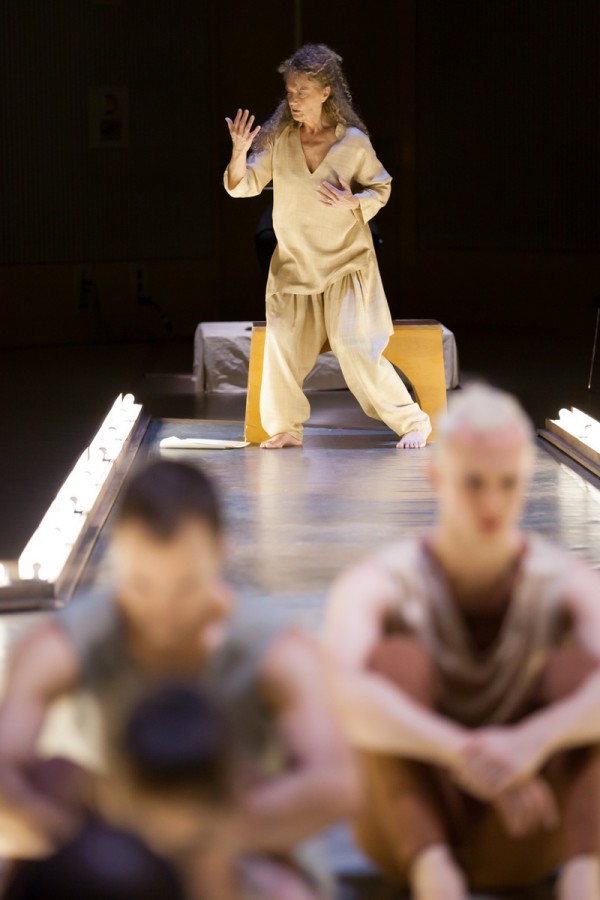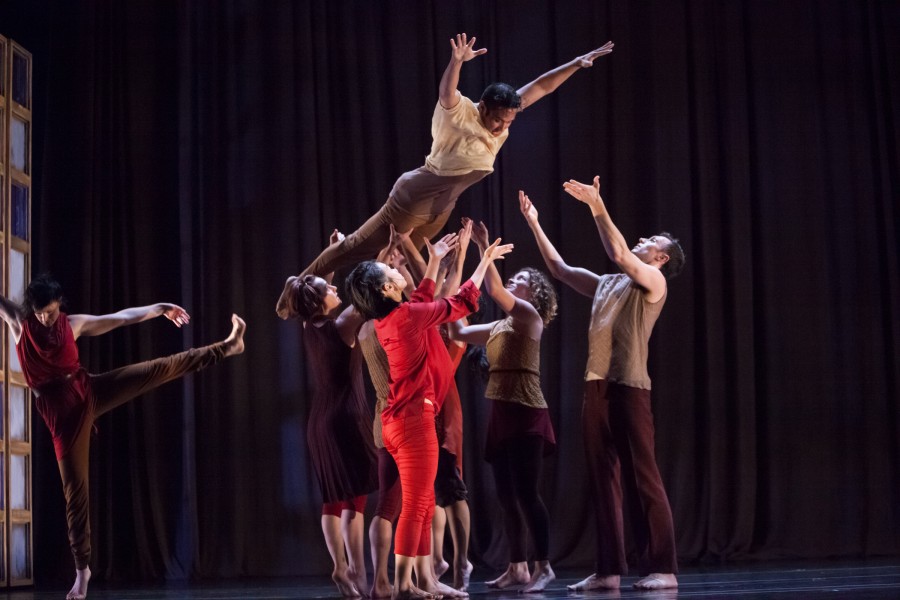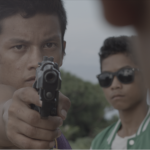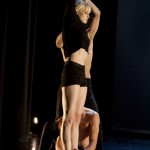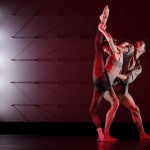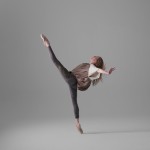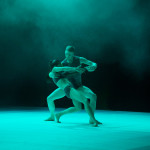Leigh Donlan reports from the Yerba Buena Center for the Arts, San Francisco:
In celebration of her company’s fortieth anniversary, choreographer Margaret Jenkins presented a threefold performance at Yerba Buena Center for the Arts in San Francisco last weekend, a reflective evening that represented Jenkins’ past, present and future work. It was a rigorous undertaking for Jenkins and her many collaborators, and the results were vastly intelligent, complicated and wondrous.
The prologue took place in the YBCA Forum, an auditorium space adjacent to the theater, and was a choreographed tribute to Jenkins and her many colleagues. The dancers moved to the sounds of a reverent cello, played by Crystal Pascucci, as Ms. Jenkins read a very long and impressive list of dates and names of people she has worked with throughout her four decade career.
After a pensive migration into the Lam Research Theater, the audience settled in for Times Bones, a work inspired by the myth of Osiris, in which Osiris’ bones are scattered and then slowly gathered by his widow, Isis, to ensure his soul’s rest. The bones, for Jenkins, were excerpts from sixty-eight of her video-chronicled works, from which she selected movements that maintained a particularly strong resonance with her.
Ten columned partitions held the video projections of Jenkins’ selected dances as her current ensemble performed the extracts, at times mirroring the images, but reinventing them. Once the partitions were rolled aside by the dancers, the bulk of the dancing ensued as a stream of explosive, simultaneous vignettes with dancers repeatedly merging, tangling, and parting. Paul Dresher’s mesmerizing “sonic atmosphere” score was created (with the assistance of sound designer Gregory Kuhn) using some remarkable electronic instruments including Dresher’s own invention, the quadrachord – which produces rare harmonics and ancient tones – and a Marimba Lumina. Combined with Gene Reffkin’s electronic drum, the music ranged from primeval percussive rhythms to cosmic echoes.
Poet Michael Palmer, another long time Jenkins collaborator, provided the text and narrative structure for the piece, contributing both a calming presence and a frame for the frenetic movement. His recorded words spoke of Osiris, “…such as we are in place, as we were, as we are… time watches.”
The seven dancers were singular and collective collaborators themselves. When embarking on this work, Jenkins supplied the dancers with her footage as a jumping off point for them. They took it and ran, with enthralling results. Kelly Del Rosario brought a fusion of capoeira movements that defied gravity, with many splayed full body falls, broken just a second before he hit the floor. Margaret Cromwell’s movement was powerfully intense but quick to soften. Every dancer spoke their own body language, but they have also gracefully learned each other’s languages.
Lastly, The Gate of Winds made its world première. Jenkins worked with Amir Kolben, Artistic Director of the Kolben Dance Company of Jerusalem, for this complicated examination of the city of Jerusalem – its religions, its beauty and power, and its contradictions. Upstage, a glorious floor-to-ceiling light grid by visual artist Alexander V. Nichols graced the space, periodically changing colors and directions except for a continuously red portion to the left of its center, that appeared to be the heart. The structure, despite its size, moved smoothly and emanated a tranquil and calm feeling.
The sound design, by The Norman Conquest, ranged from experimental, neo-folk to ancient ambient sounds, and had a dreamlike affect, often feeling separate, or just barely out of reach, from the dance though somehow connected. Maybe this was intentional. The movement was, again, complex and often contentious, with dancers regularly glaring at the audience at length, as if we were intruders – intruders in the Holy City. Walls or barriers were a constant theme. In the final powerful scene, dancer Chinchin Hsu was gently supported by three other dancers as she repeatedly leapt off a platform, always falling into their arms, as we heard the throaty calls of warbler birds.They never flinched at her explosions, and remained steady and strong in their support of her.
This program demanded great attention from its audience as we, in turn, seemed to be collaborators in creating its meaning. I left knowing that I would need to see it again, and again, to decipher more meaning. A lot of information was presented, with little time to digest, but definitely an experience worth repeating.

